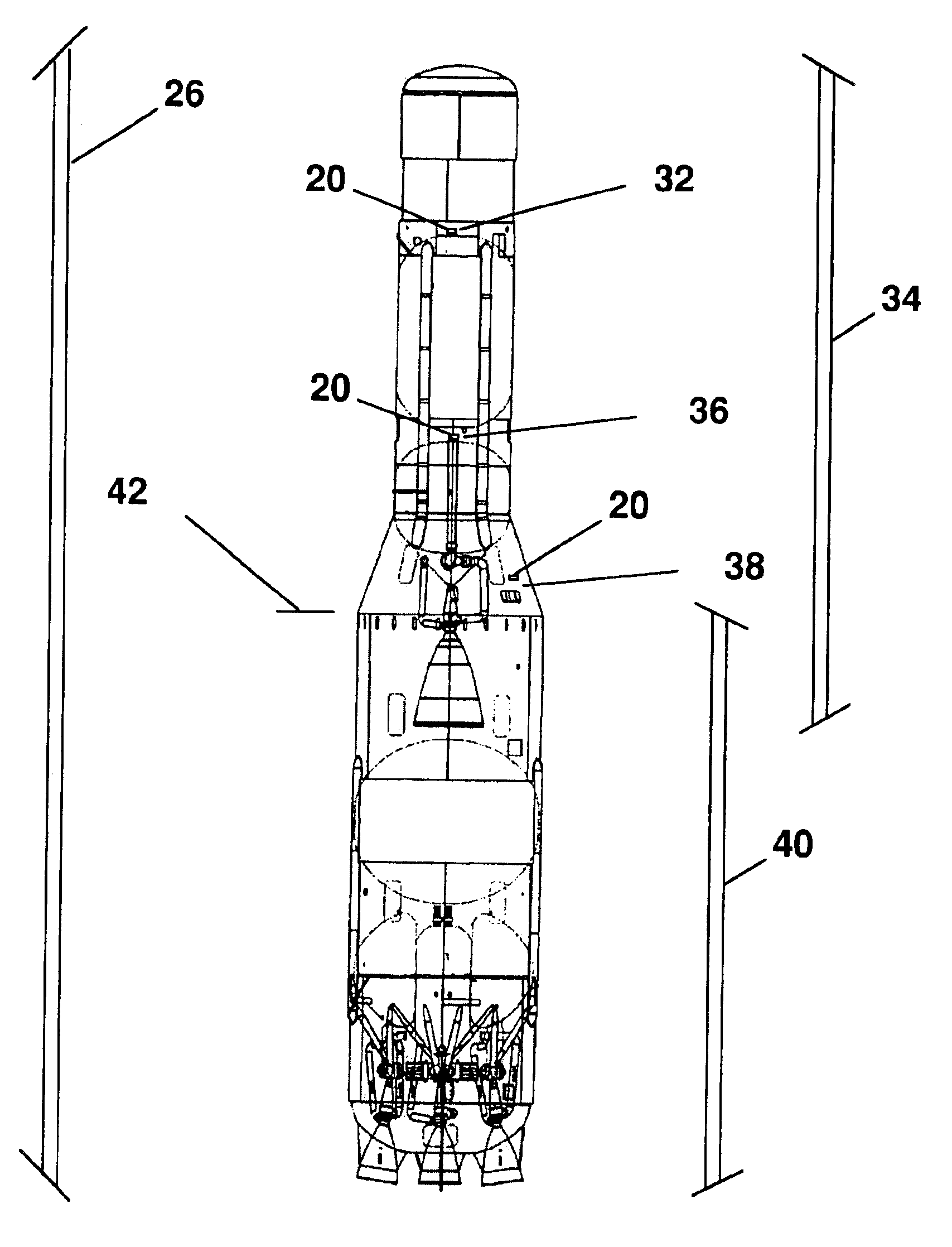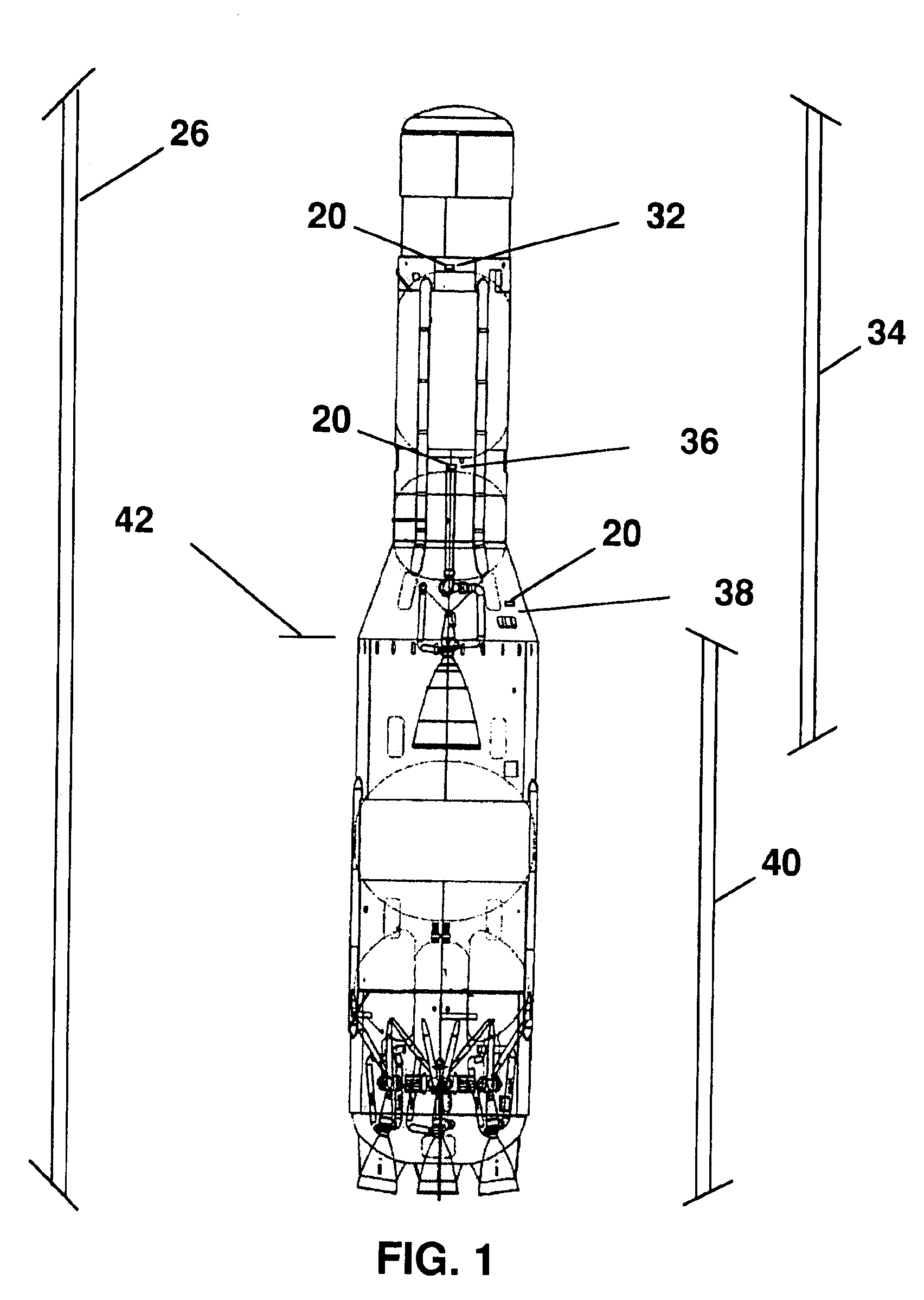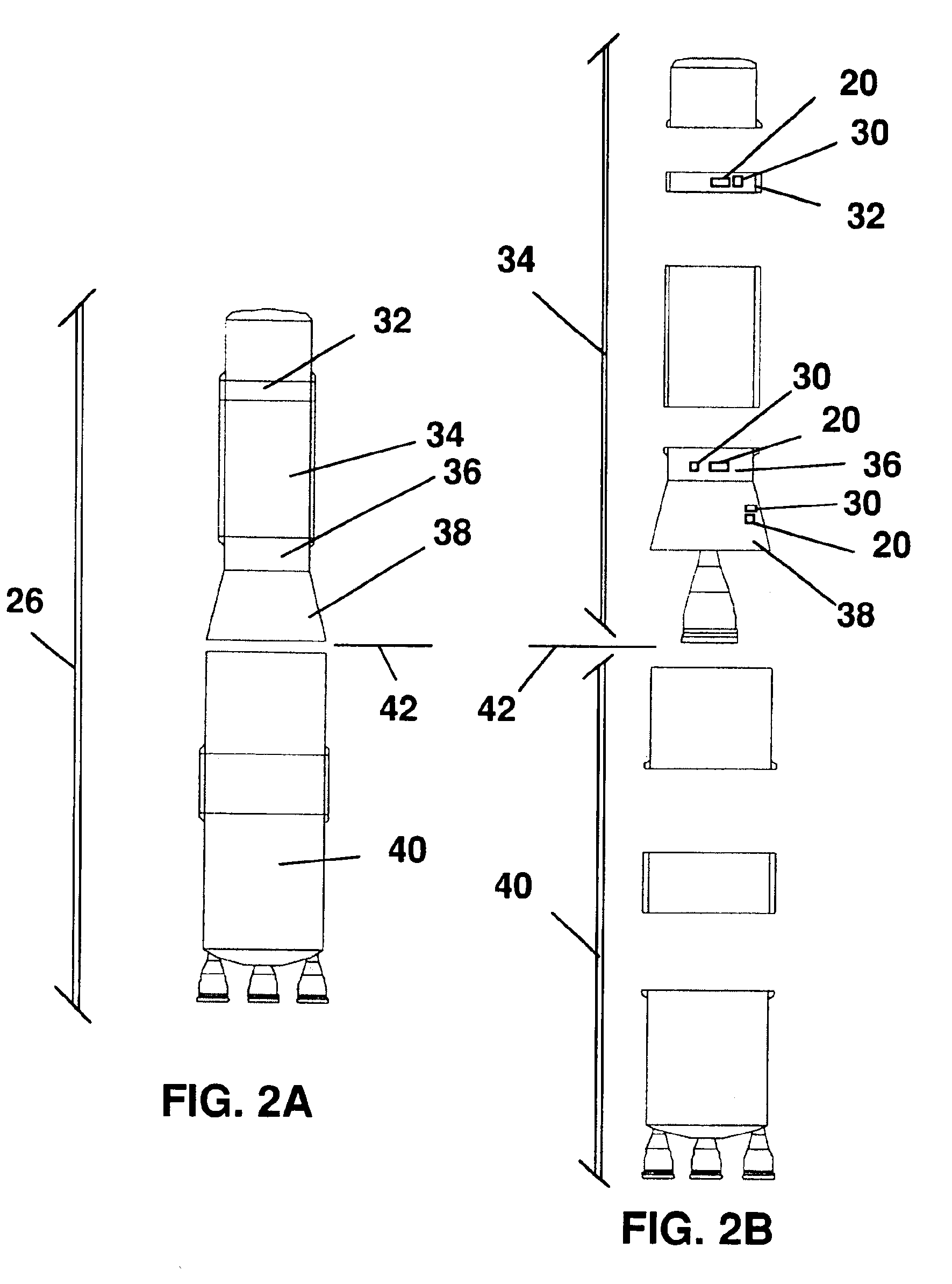Commercial experiment system in orbit
a commercial experiment and orbit technology, applied in space shuttles, transportation and packaging, space vehicles, etc., can solve the problems of high hardware cost, high cost of individual operations required to transport cargo to space, and high cost of transporting cargo to space, so as to reduce the cost of experimental design and operation, cost effective
- Summary
- Abstract
- Description
- Claims
- Application Information
AI Technical Summary
Benefits of technology
Problems solved by technology
Method used
Image
Examples
example 1
Mid-Deck Locker Test Quick in Microgravity
[0124]A 2 cubic foot standard experiment container is placed aboard the launch vehicle and supplied communications and electrical power to use effectively the 22 hours of microgravity as a secondary payload within the launch vehicle mission timeline in orbit. The 22 hours of “quiet” undisturbed microgravity is used to test the experiment hardware to determine the suitability for longer duration flights to orbit.
PUM
 Login to View More
Login to View More Abstract
Description
Claims
Application Information
 Login to View More
Login to View More - R&D
- Intellectual Property
- Life Sciences
- Materials
- Tech Scout
- Unparalleled Data Quality
- Higher Quality Content
- 60% Fewer Hallucinations
Browse by: Latest US Patents, China's latest patents, Technical Efficacy Thesaurus, Application Domain, Technology Topic, Popular Technical Reports.
© 2025 PatSnap. All rights reserved.Legal|Privacy policy|Modern Slavery Act Transparency Statement|Sitemap|About US| Contact US: help@patsnap.com



